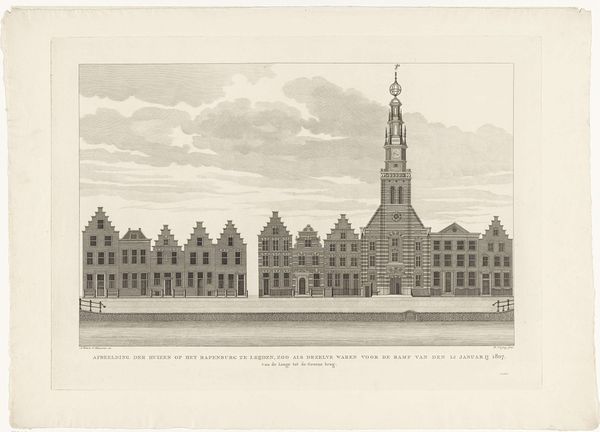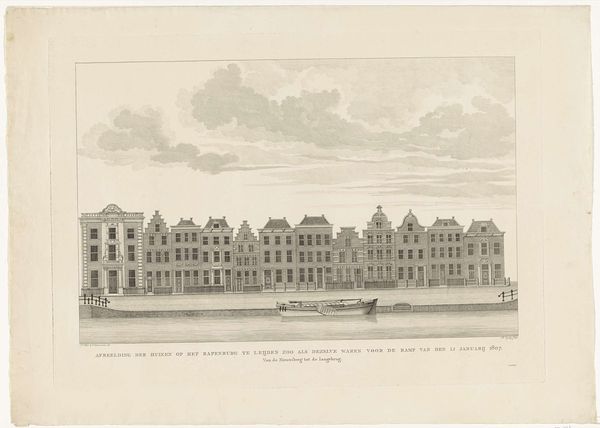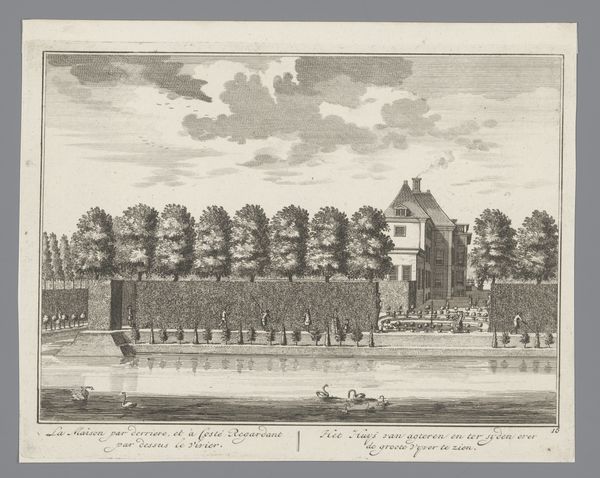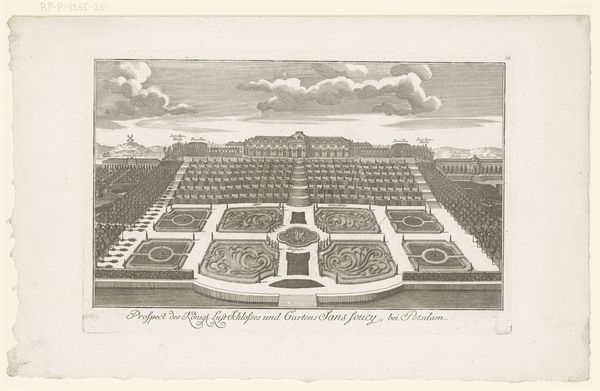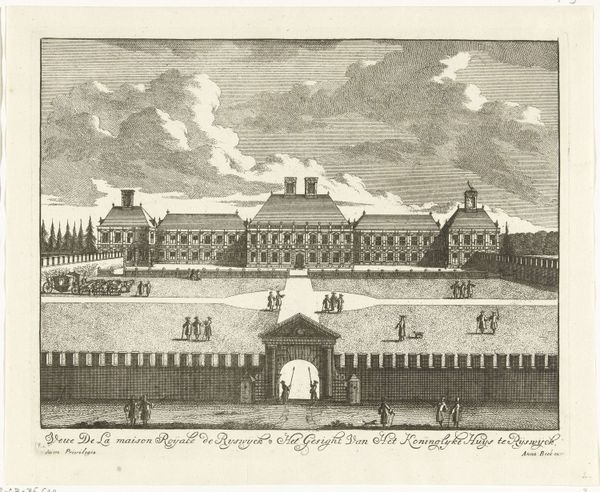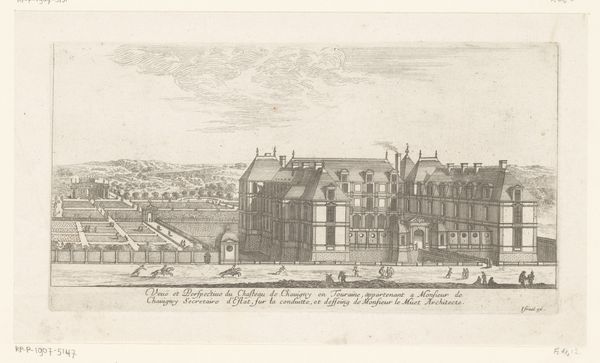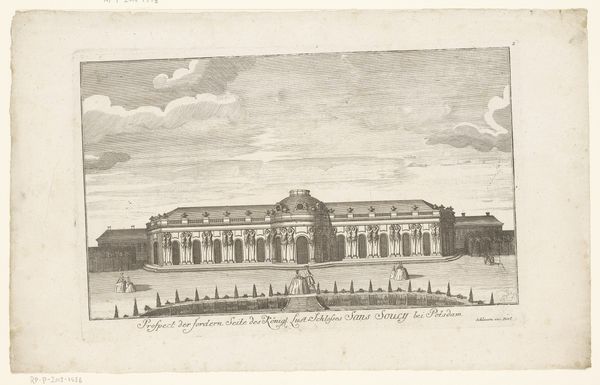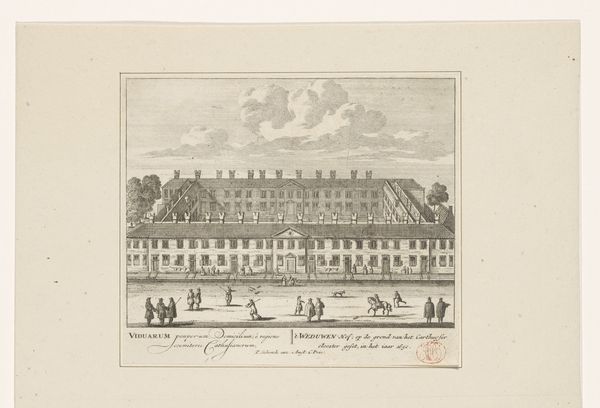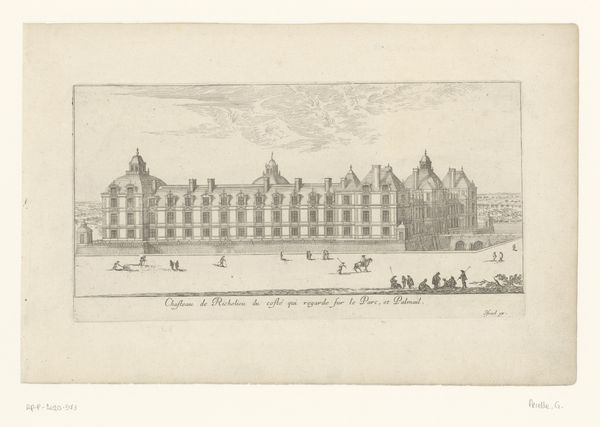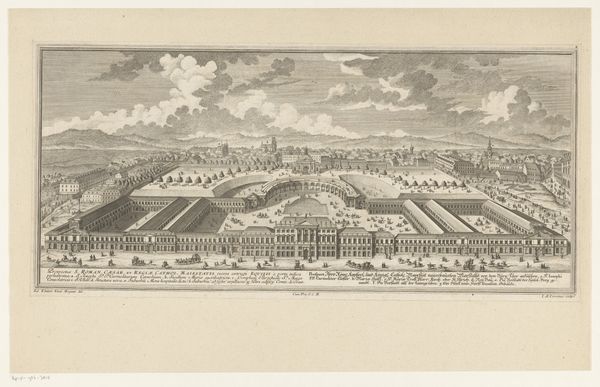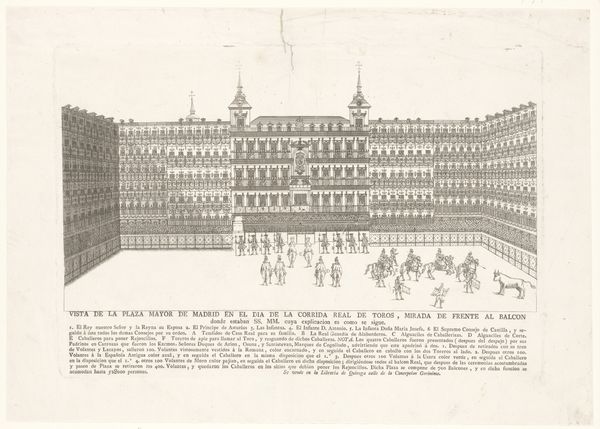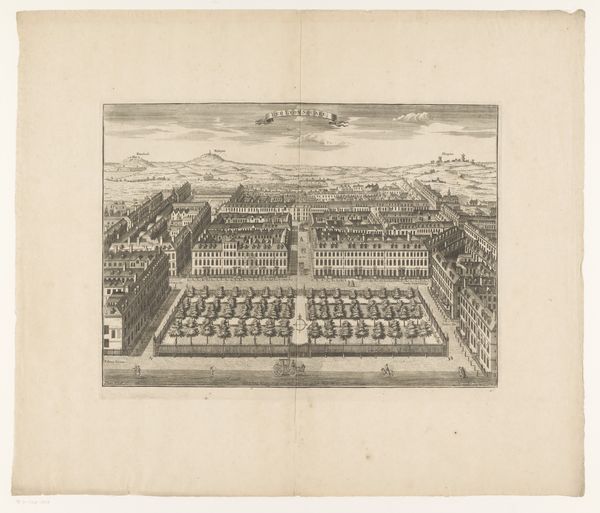
Gezicht op de huizen aan het Rapenburg te Leiden, van de Groenmarkt (of Garenmarkt) tot de Sint Jacobsgracht, voorafgaand aan de ramp van Leiden, 1807 1807
0:00
0:00
drawing, print, engraving
#
drawing
#
neoclacissism
#
dutch-golden-age
# print
#
landscape
#
cityscape
#
engraving
#
building
Dimensions: height 456 mm, width 631 mm
Copyright: Rijks Museum: Open Domain
Editor: This is “Gezicht op de huizen aan het Rapenburg te Leiden, van de Groenmarkt (of Garenmarkt) tot de Sint Jacobsgracht, voorafgaand aan de ramp van Leiden, 1807,” made in 1807 by Daniël Vrijdag. It’s an engraving, a cityscape. It has such a still, almost photographic quality, like a preserved memory. What do you see in this piece, particularly knowing it depicts the scene before a disaster? Curator: What strikes me is how this seemingly neutral, almost documentary image is laden with the weight of impending loss. Look at the symmetry of the buildings, the repeating patterns of windows, the calm water. These elements speak to order, stability, and continuity. But the very title tells us this is a record *before* the "ramp". Do you think this image serves as a form of visual elegy even before the event itself occurred? Editor: That's fascinating – an elegy in anticipation. It’s as if the artist is saying, “Remember this order, because it won't last.” The buildings themselves, with their stepped gables, almost seem to be holding their breath. It also feels symbolic. Are there certain building types, or even architectural details, that carry specific cultural meanings for viewers of this time? Curator: Precisely. Those gables, for instance, speak of Dutch civic pride and domesticity, referencing a prosperous merchant class and deeply rooted community values. But placing them within the context of the upcoming disaster makes those symbols all the more poignant, vulnerable even. This interplay of visual signifiers and historical context highlights how profoundly images can carry cultural memory, infusing ordinary scenes with extraordinary meaning. The printmakers of the era helped people make sense of cultural trauma. Editor: I hadn't thought about it that way - about imbuing the ordinary with the potential of being gone, about bearing witness. Now I see it’s not just a cityscape, it's a cultural marker of loss and resilience. Curator: Yes, seeing this work highlights the intersection of historical event and its symbolic interpretation, reminding us of the stories buildings silently hold and tell.
Comments
No comments
Be the first to comment and join the conversation on the ultimate creative platform.
